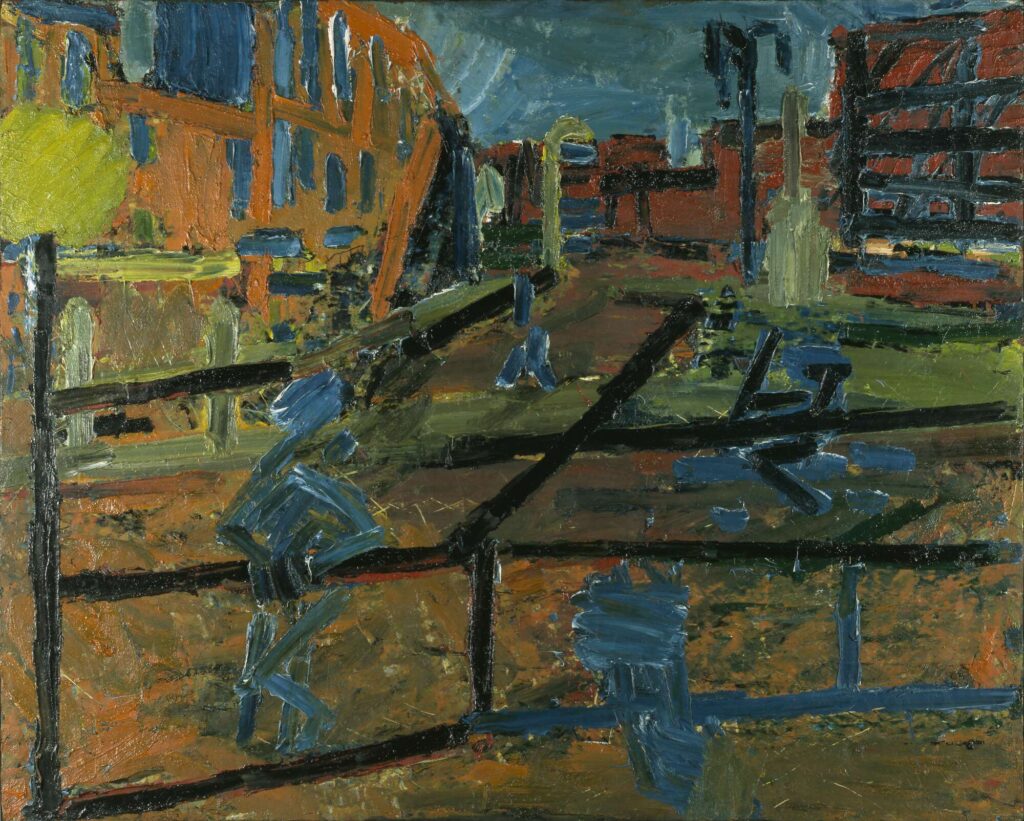A closer look: Frank Auerbach’s Mornington Crescent
Frank Auerbach always chose to paint subjects that were close to him.
Frank Auerbach always preferred the subjects of his paintings to be close to him – places, such as Primrose Hill and Mornington Crescent that were near his studio in north London; and people, such as his regular sitter ‘E. O. W’. In 1978, he wrote:
I’ve got certain attachments to people and places, and it seems to me to be simply less worthwhile to record things to which I’m less attached, since I know about things that nobody else knows about.

Frank Auerbach, Mornington Crescent, 1970
Mornington Crescent was a subject that Auerbach consistently revisited in his painting.
I have a strong sense that London hasn’t been properly painted … It has always cried out to be painted, and not been. The things Rimbaud and Verlaine felt about it! They cried out to be recorded and preserved against time!
This area of north London had been a favourite among artists before Auerbach focused his attention on it. Walter Richard Sickert, the painter who established the Camden Town Group in the early 20th century, lived at 6 Mornington Crescent and devoted many of his paintings to it. In Auerbach’s painting here, he depicts the street in his characteristically thick, buttery strokes. A pelican-crossing light beacon frames the painting on the left, while painted figures in blue stroll past heavy black railings. The characteristic deep maroon red tiles of Mornington Crescent tube station appear on the right.
Even though his paintings might superficially look as if they have been executed very quickly, Auerbach laboured over his works for a long time. Landscapes were typically painted in his studio, worked up from memory and from drawings made in front of the subject. Multiple layers of paint were added and then repeatedly scraped off, so that the finished work might be no reflection of its earlier stages. It is no coincidence that Auerbach’s early works were dominated by sombre greys and browns; these colours were among the only paints he could afford to use in such quantities before the establishment of his reputation offered him the luxury of exploring brighter, more expensive colours.
Frank Auerbach
Frank Auerbach was born in Berlin. In April 1939, to escape growing persecution in Germany, Auerbach’s parents put their 8-year-old son on a ship bound for Britain. He never saw his parents again, and learnt in 1943 that they had died in a concentration camp.
After school, Auerbach took up acting and began attending art classes. In 1948 he joined David Bomberg’s influential painting classes at Borough Polytechnic in London. He continued to attend classes even while studying at St Martin’s and the Royal College of Art from the late 1940s to the mid 1950s. He was part of a loose group of artists of the ‘School of London’ that included R. B. Kitaj, Auerbach, Lucian Freud, Michael Andrews, Francis Bacon and Leon Kossoff.
He died, age 93, in 2024.


